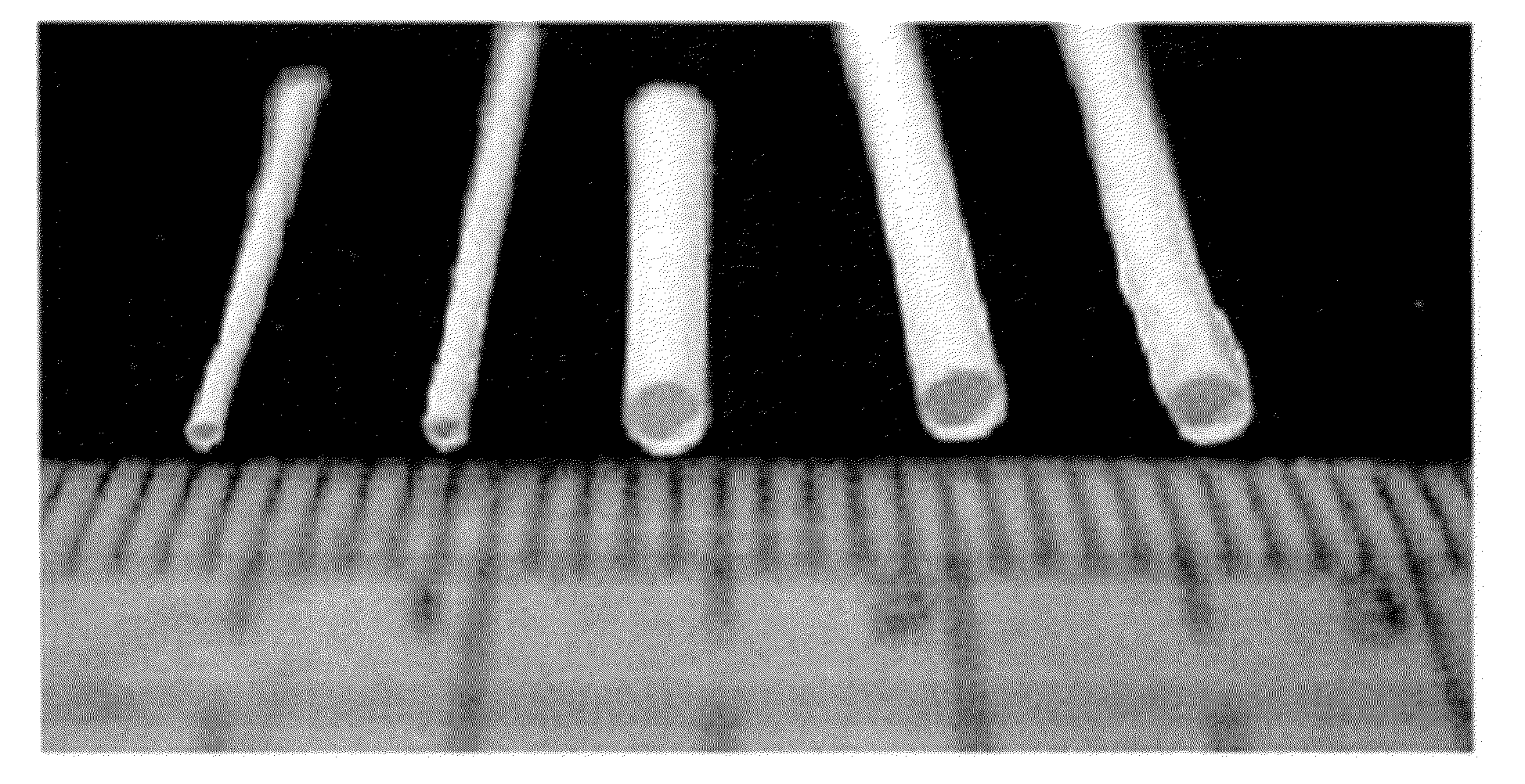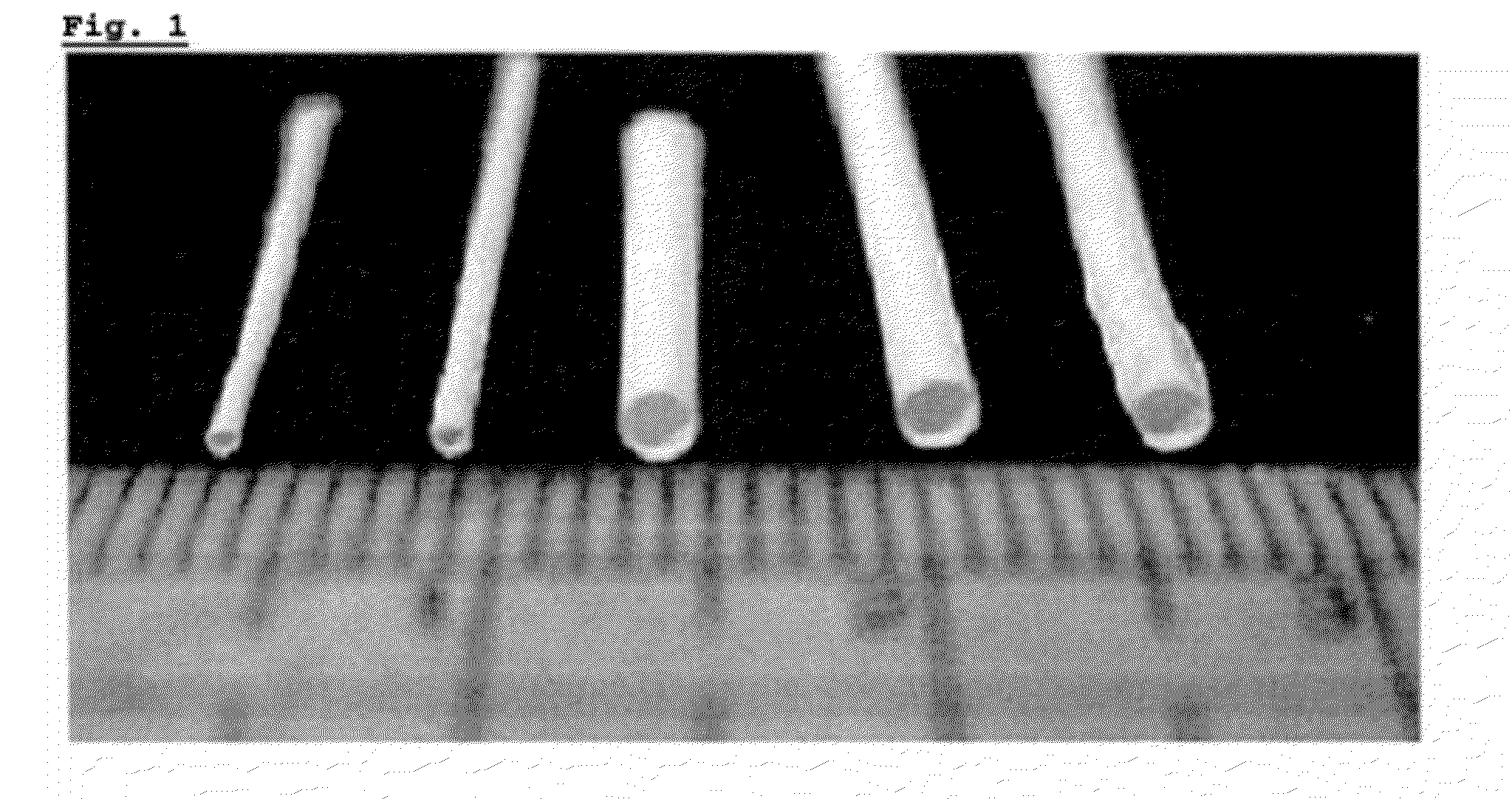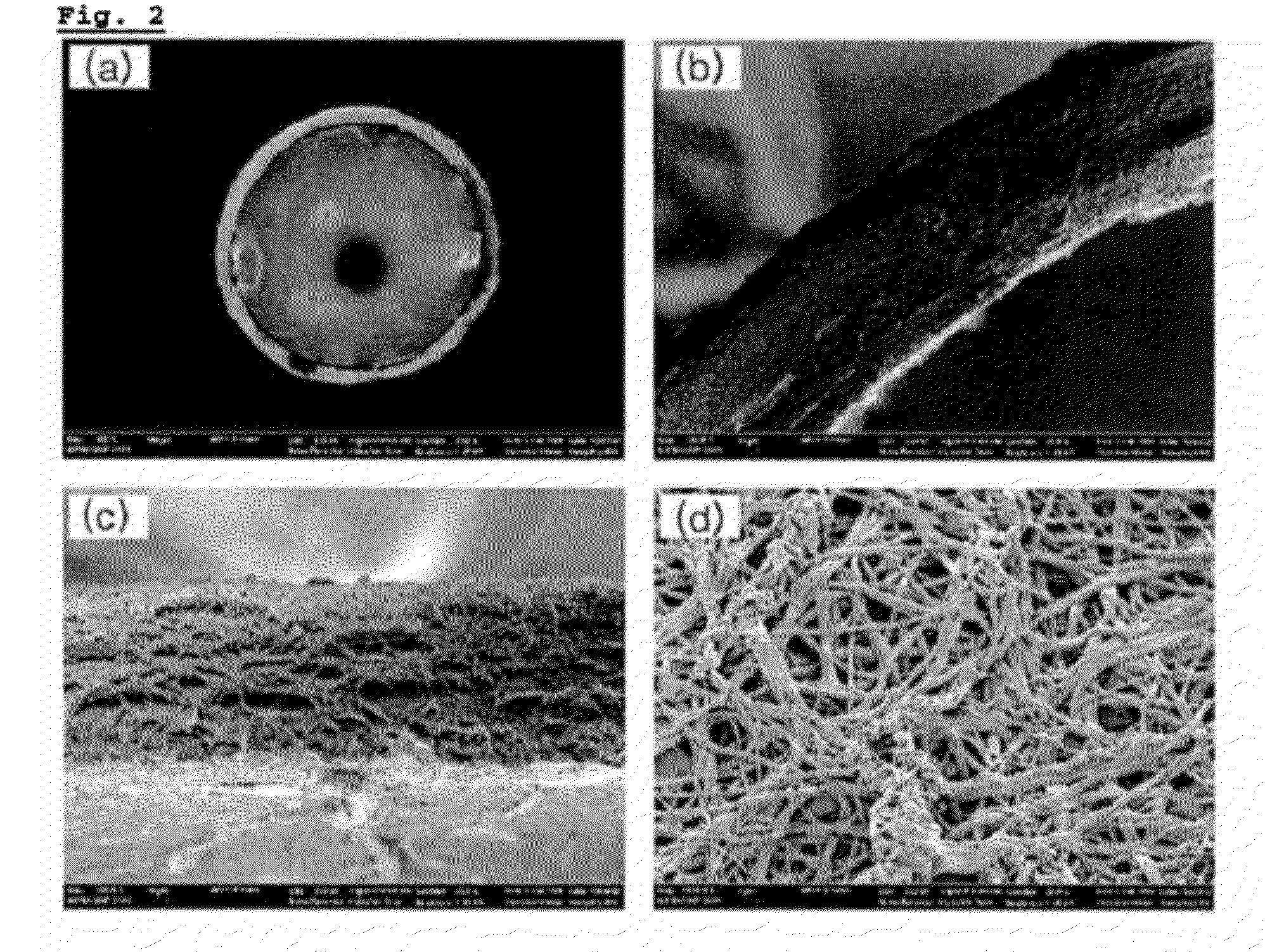Silk nanofiber nerve conduit and method for producing thereof
a technology of nanofiber nerves and fibers, applied in the direction of filament/thread forming, prosthesis, surgery, etc., can solve the problems of inability to apply a specific length of nerves, inability to achieve motor skills, sensory paralysis, etc., to achieve excellent biocompatibility, excellent nerve regeneration effect, and recovery of motor skills and sensory functions
- Summary
- Abstract
- Description
- Claims
- Application Information
AI Technical Summary
Benefits of technology
Problems solved by technology
Method used
Image
Examples
example 1
Producing Silk Nanofiber Nerve Conduit
[0040]Step 1: Preparing Fibrous Spinning Solution
[0041]40 g of dried cultivated cocoon was submerged in 1 L of mixed solution wherein 0.3% of sodium oleate and 0.2% (w / v) of sodium carbonate was dissolved, heated to boil for 1 hour, and washed repeatedly to remove sericin. The sericin-removed cocoon was dried again and dissolved in mixed solution at the ratio of 1 / 20 at 85° C. for 3 min, wherein the mixed solution included calcium chloride / water / ethanol at mole ratio of 1 / 8 / 2. This dissolved solution was placed in the dialyzing diaphragm (MWCO: 12-14 kDa) and underwent dialysis with distilled water for 3 days, and the silk fibroin solution having approximately 2% (w / w) concentration was obtained. After the solution was lyophilized, silk fibroin sponge which was appropriate for the secondary dissolution was prepared and perfectly dissolved in 13% concentration of the formic acid (over 98% purity); therefore, fibrous spinning solution was prepared...
experiment example 1
Measurement of Structural Characteristics
[0046]The following experiment was performed in order to find out the structural characteristics of silk nanofiber nerve conduit of the present invention.
[0047]FIG. 1 presents photographic images of silk nanofiber nerve conduit of the Example 1. FIG. 2 presents electro-microscopic images of silk nanofiber nerve conduit regarding the present invention. For more details, (a) in FIG. 2 presents the cross-section of silk nanofiber nerve conduit, (b) and (c) of FIG. 2 present magnified cross section images, and (d) of FIG. 2 presents the fabric structure of the silk nanofiber nerve conduit surface.
[0048]According to FIG. 1, silk nanofiber nerve conduit of Example 1 of the present invention had circle-shaped cross section. The inside of the silk nanofiber nerve conduit was hollow and the thickness of the conduit was approximately 0.2 mm.
[0049]According to the (a),(b),(c) and (d) of FIG. 2, the cross section of silk nanofiber nerve conduit of Exampl...
experiment example 2
Measurement of Mechanical Property
[0051]The following experiment was performed in order to recognize the mechanical property of silk nanofiber nerve conduit of the present invention.
[0052]In order to test tensile strength of the nerve conduit, the conduit having 4 cm length was prepared. Inner diameter of the nerve conduit was 1.65 mm and the thickness of conduit wall was average 200 μm. Therefore, cross sectional area was 1.16 mm2([{(1.65+0.4) / 2}2−(1.65 / 2)2]*π). Tensile strength test was performed after submerging the conduit in normal saline solution for 1 hour. The ending of the sample which was swollen in the solution was fixed on test device. With 2 cm gauge length and 10 mm / min speed, the strength and elongation of severance was measured until desired position.
[0053]The result is as shown in Table 1 below.
TABLE 1Example 1Cutting elongation (%)243 ± 15Cutting strength (MPa) 4.92 ± 0.07Yield point (%)20
[0054]As referred in Table 1, elongation of severance was approximately 250%,...
PUM
| Property | Measurement | Unit |
|---|---|---|
| Fraction | aaaaa | aaaaa |
| Diameter | aaaaa | aaaaa |
| Fraction | aaaaa | aaaaa |
Abstract
Description
Claims
Application Information
 Login to View More
Login to View More - R&D
- Intellectual Property
- Life Sciences
- Materials
- Tech Scout
- Unparalleled Data Quality
- Higher Quality Content
- 60% Fewer Hallucinations
Browse by: Latest US Patents, China's latest patents, Technical Efficacy Thesaurus, Application Domain, Technology Topic, Popular Technical Reports.
© 2025 PatSnap. All rights reserved.Legal|Privacy policy|Modern Slavery Act Transparency Statement|Sitemap|About US| Contact US: help@patsnap.com



